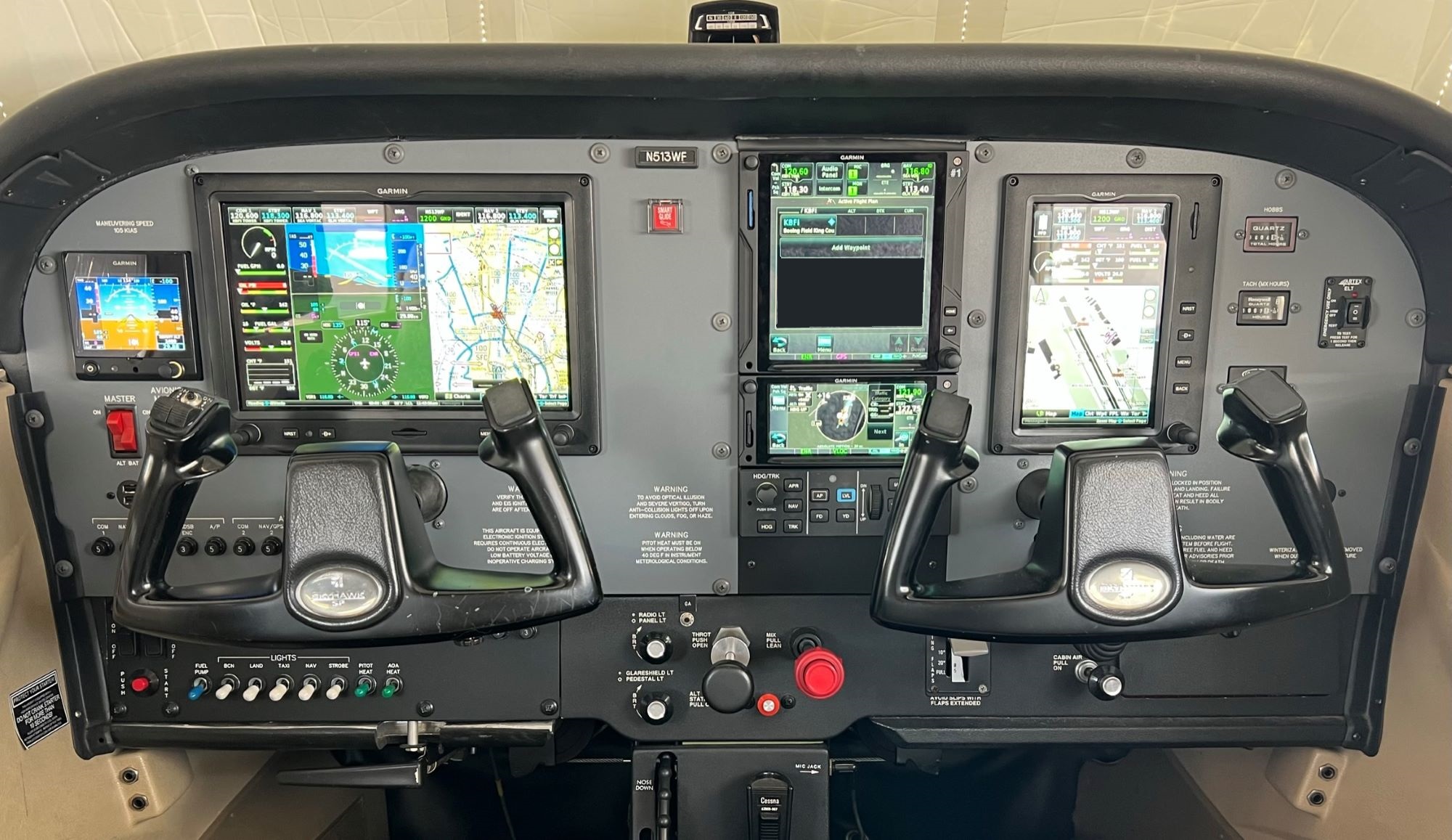Please note: All documentation linked to on this website is being superseded by documentation and instruction provided at the FBO.
-
Highlights
- TAA (Technically Advanced Airplane) due to PFD/MFD/AP
- The TAA aspect allows this plane to earn not only your Private Pilot certificate and IFR rating, but also your Commercial Pilot certificate – because TAAs have their own level of complexity, it is now considered an appropriate alternative to a traditional complex single engine aircraft like e.g. a Piper Arrow or a Mooney, which are not available in many flight schools
- WAAS GPS, enabling LPV, LNAV/VNAV and LP approaches
- 4 Touch screens
- PFD: G3X Touch 10.7″ (landscape layout)
- Flight instruments: Round Gauges or Tapes representation
- Integrated engine instruments
- Supports split screen for combined PFD/MFD usage
- 3 MFDs for maximum information real estate:
-
- 2 MFD touchscreens (GTN 750/650 Xi)
- Including audio, intercom and XPDR panels
- Geo-referenced IFR charts (US/Canada)
- G3X Touch 7″ (portrait layout)
- Can also act as second PFD
- 2 MFD touchscreens (GTN 750/650 Xi)
-
- PFD: G3X Touch 10.7″ (landscape layout)
- ADS-B
- Out (1090ES) automated WAAS GPS position transmission
- In (Dual-band: 1090ES + 978UAT) reception and presentation of:
- TIS-B: Traffic and
- FIS-B: WX (Nexrad, Winds Aloft, METARs, TAFs, AIRMETs, SIGMETs, PIREPs), NOTAMs, TFRs, SUAs
- Bluetooth streaming of TIS-B, FIS-B and AHRS info to your EFB
- Digital GFC500 Autopilot with VNAV support, envelope protection and LVL button
- MET (Manual Electric Trim) switch on pilot-side yoke
- TOGA button for AP-coupled missed approaches
- 2 x 2 USB 2.7A – strong enough to charge EFBs or other devices
- Safety features
- Synthetic Vision (can be disabled if so desired)
- AOA (Angle of Attack) Indicator
- No vacuum system and unreliable gyro instruments in this aircraft
- G5 PFD/MFD Emergency backup EFIS
- Smart Glide emergency button
- Engages the autopilot to establish best glide speed and steers towards the nearest airport in landing distance while you can focus on other tasks
- CO Detector with G3X integration
- Digital ELT with GPS position transmission
- TAA (Technically Advanced Airplane) due to PFD/MFD/AP
-
POH
- Cessna 172S Information Manual – Searchable PDF
- The AFM Supplements can be found using the menus on top and also in a binder inside the airplane
- Cessna 172S Information Manual – Searchable PDF
-
Engine
- Lycoming IO360-L2A
- Overhauled engine installed Nov 2023
-
System 0verview
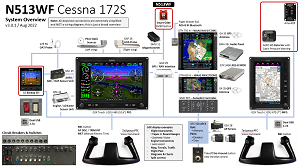
Notes:
- Use of polarized eyewear may cause glass cockpit displays to appear dim or blank – using non-polarized sunglasses is recommended
- Do not remove any of the SD cards from the devices, these cards are critical for proper operation and to be serviced by authorized personnel only!
GARMIN G5 Standby EFIS (Attitude Display Indicator) / PFD with 4 hour backup battery
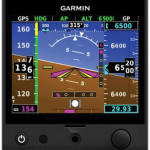
AFM Supplement | Pilot’s Guide
GARMIN G3X Touch PFD / MFD Screens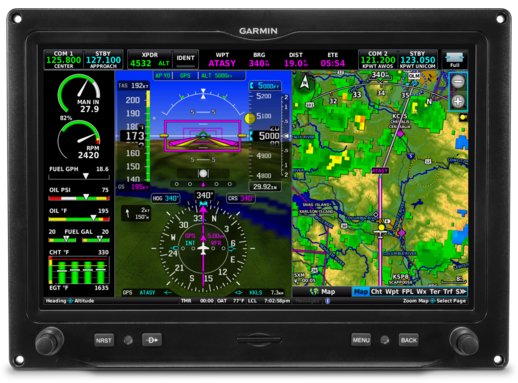
Note that the functionality of the right knob changes based on whether you’re in full screen PFD or in split screen mode. It is important to read the manual (see below links) before using the G3X screens!
AFM Supplement | Pilot’s Guide
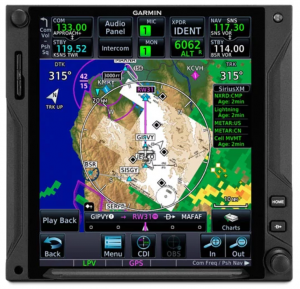
…with remote control of both GMA 35c audio panel and GTX 345R XPDR/ADS-B Out: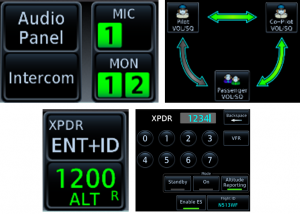
AFM Supplement | AFM Supplement (XPDR with ADS-B) | Pilot’s Guide | PC Trainer | iPad Trainer
The Telligence Voice Command feature (the Push-To-Command button added to both yokes) may not work properly without investing time into training the unit to deal with individual voices and accents, and should therefore generally not be used.
Voice Command Guide | Voice command video
GARMIN GTN 650 Xi WAAS GPS/NAV/COM/MFD (# 2)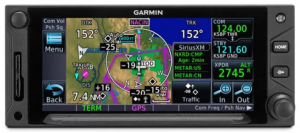
…with remote control of GTX 345R XPDR/ADS-B Out: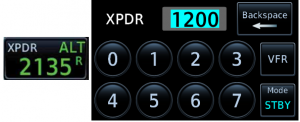
Please note that the CDI button to control the source of NAV #2 is on the Default Navigation page (and not on the Map page as on the GTN 750).
AFM Supplement | AFM Supplement (XPDR with ADS-B) | Pilot’s Guide | PC Trainer | iPad Trainer
GARMIN GFC 500 Digital Autopilot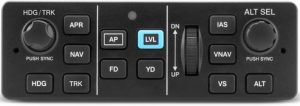
This autopilot system includes flight director-controlled pitch/roll/pitch-trim, an AP DISC / TRIM INT (Autopilot Disconnect / Trim Interrupt) button on the yoke, a Go Around button near the throttle, and an MET (Manual Electric Trim) switch on the yoke.
Even if you don’t plan on using the autopilot, you can – and are encouraged to – use the HDG / TRK and ALT SEL knobs to control both the heading and altitude bugs on the G5 units.
The LVL button is designed to have the autopilot quickly restore straight and level flight attitude in case you should get into an unusual attitude or a spatial disorientation situation. When straight and level flight has been restored, the pilot can continue to use the autopilot, or – if unfamiliar with the AP system – disengage it using the AP DISC button on the yoke or the AP button on the panel and continue to fly manually.
DO NOT USE THE AUTOPILOT WITHOUT THOROUGH PRIOR FAMILIARIZATION AND INSTRUCTION FROM A CFI.
EVERY PILOT MUST KNOW ALL METHODS TO DISENGAGE THE AUTOPILOT, WHETHER THEY’RE PLANNING ON USING THE AP OR NOT.
AFM Supplement | Pilot’s Guide
GARMIN FlightStream 510
You can wirelessly connect your e.g. Garmin Pilot app, ForeFlight or Fltplan Go on your iPad / iPhone / Nexus / Galaxy via Bluetooth (not WiFi!) to make use of these ADS-B In features on your device:
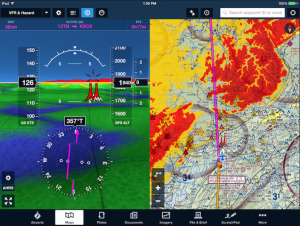
-
-
- ADS-B traffic and WX (ADS-B In)
- WAAS GPS location
- AHRS backup attitude information
- 3D Synthetic Vision (SV) in your app is supported (if available, as per your app subscription plan)
- Flight plans can be prepared before flight, then synchronized both ways anytime between your app and the avionics
- It is recommended to always create and modify your flight plan on the GTN750, and sync it to your tablet (if you wish), not the other way around.
That way you can be sure that incompatible features (e.g. traffic pattern routing in ForeFlight) does not potentially mess up your actual flight plan.
Instead, use your EFB software as flight plan “playground” and for additional convenient information retrieval.
- It is recommended to always create and modify your flight plan on the GTN750, and sync it to your tablet (if you wish), not the other way around.
-
Please note:
– VFR: GPS/AHRS/SV displayed on your portable device should primarily be used to enhance situational awareness or to assist in emergencies, and are no replacement for looking outside when you fly (VFR and IFR)
– IFR: The FAA/IFR-approved, panel-mounted devices in this cockpit still need to be the primary source of navigation for all normal IFR operations
– Be present to, and comply with AC 91.78 when using your EFB
Connecting Garmin Pilot | Connecting ForeFlight | Connecting Fltplan Go
-
Engine Instruments
TIPS
Tap on the Engine Instruments on the G3X display for more details!
CHT for cylinder head temperature monitoring:
Recommended cont. operation CHT is 350-400°F – the sweet spot being 380°F.
– Excessively high engine temperatures, either in the air or on the ground, will cause loss of power, excessive oil consumption, and possible permanent internal engine damage!
– If the CHT is too hot on one or even several cylinders, increase airspeed, enrich the mixture, or reduce power – any of these procedures will aid in reducing the engine temperature
– Too low a temperature is not good, either – continuous operation below 350°F can lead to a rough engine due to lead fouling of the spark plugs and sticky valves, which can ultimately lead to loss of power and engine damage
EGT for mixture leaning
– Lean the mixture on the ground as per your CFI’s recommendations.
– At altitude it is recommended to use the Lean Assist (section 3.2 in the Pilot’s Guide) feature offered by the G3X displays (touch on the engine instrumnents to get to see that button).
– Recommended: 50°F ROP (Rich of Peak)
– Best economy: Peak EGT
– Continuous operation LOP (Lean of Peak) is prohibited by the POH! (see page 4-27)
– Failure to lean the engine as needed (mixture too rich) will lead to fouling of spark plugs, rough engine and decreased power; failure to re-enrich it as needed (mixture too lean) will lead to overheating of the engine.
Proper cylinder heat control and mixture leaning is important for engine health and reliabilty – please consult both POH and your CFI for more information and best practices!
OIL TEMP: The sweet spot is 180-200°F.
-
Other
Electroair Ignition Switch Panel
Lets you engage the the starter without a key after turning on the Magneto/EIS switches (the SureFly EIS – Electronic Ignition System, replacing the R Mag – is the modern version of a traditional magneto).
Make sure that both switches are OFF after shutting down the engine!
GA – A Takeoff/Go Around button near the throttle control that is part of the autopilot system lets you instantly set a roll-level / 7° pitch up FD mode that you can use to execute IFR missed approaches at the MAP with the AP still engaged (or turn off the AP and continue the approach to land).
DO NOT USE THIS BUTTON AND THE AUTOPILOT WITHOUT THOROUGH PRIOR FAMILIARIZATION AND INSTRUCTION FROM A CFI!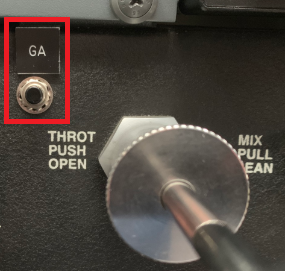
smartPower 250 Dual 2.7A backlit USB on both sides of the cockpit panel – enough power to charge full-size iPads while they’re in use.
TIP: It’s more likely for off-brand charging cables and adapters to malfunction over time or cause radio communication interference; please only use original / certified / shielded cables – these typically cost a bit more, but are more reliable and oftentimes also last longer, so it’s money well spent.
Note: The USB ports are only active when the Avionics Master (AVN Bus 2, to be precise) is on – the engine should normally be running at that point.
GARMIN Smart Glide button can automatically engage the autopilot and pitch for the aircraft’s best glide speed while simultaneously navigating the aircraft to the nearest suitable airport in gliding distance
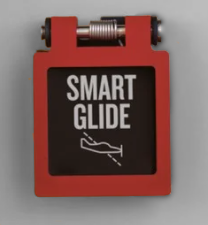
AERO 452-101 CO Detector to alert you to presence of carbon monoxide.
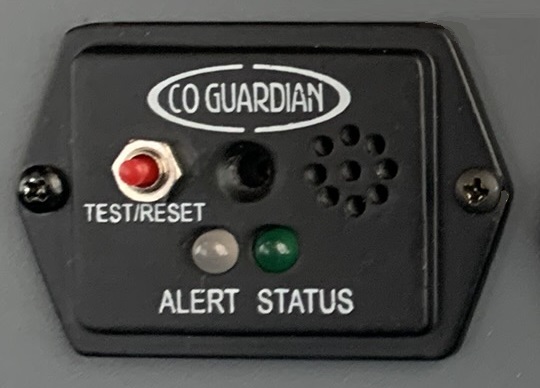
Detects, measures, and provides both a visual and aural alert before the level of carbon monoxide (CO) reaches a critical level.
The CO Detector contains a Test/Reset button, an aural alarm buzzer, an Amber LED ALERT annunciator, and a green LED STATUS annunciator.
The CO alarm level is calibrated to provide both an aural and visual alert within 5 minutes or less whenever the carbon monoxide level reaches 50 parts per million (PPM) by volume or above per TSO C48A. The warning time is shortened at higher levels of CO concentrations and becomes approximately instant should the CO level reach 400 parts per million by volume (PPM) or above.
In case of a CO alert, the pilot can acknowledge the alert and silence the aural warning while keeping the visual alert until the CO level is again reduced below the alert level. The indicator is automatically reset when the CO level drops below 50 PPM. There is a three-minute delay at startup for sensor to stabilize before the unit will sense CO.
The unit also provides the G3X with Cabin Altitude info (the current pressure altitude of the aircraft cabin) as a Data Bar field option; search the G3X manual for Cabin Altitude for more information.
ARTEX ELT 345 Emergency locator transmitter on both 406 MHz (digital GPS data) and also 121.5 MHz (analog homing)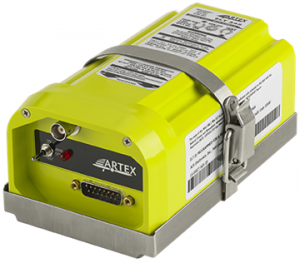
Advantages of a 406 MHz ELT:
– More transmitter power (second, 5W bursts every 50 sec)
– Dedicated and protected frequency designed specifically for detection by satellites
– Faster SAR response:
– Near instantaneous detection by both geostationary and polar-orbiting satellites in low orbit
– More accurate location calculations resulting in a much smaller search area (1-3 miles)
The ELT in this aircraft is registered with NOAA SAR/SAT.
Earlier stages of the this cockpit panel:
– First major panel upgrade in Spring 2018 (upper picture) – aka “3WF v2.0”
– Original Nav II equipment of 2004 (lower picture)

